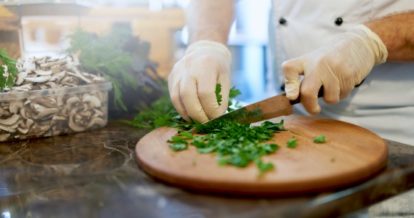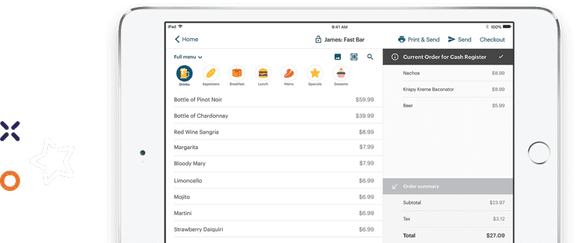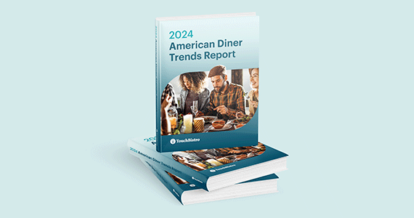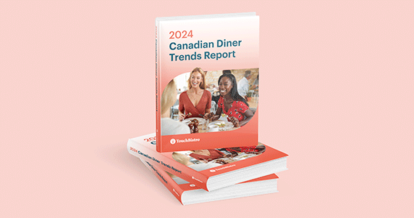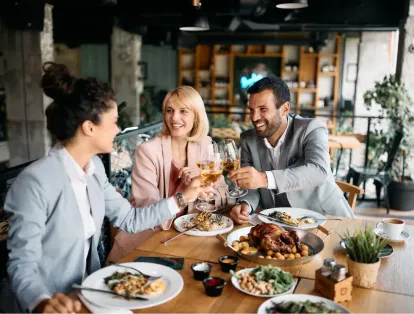Your restaurant was likely humming with energy and serving a full house on Valentine’s Day – which wasn’t all that long ago. Food safety was part of your practice, but maybe not the number one thing on your mind. Not like now.
Fast forward a few weeks and restaurateurs worldwide have been forced to adapt to the necessary social distancing practices. This unprecedented situation has many people – rightfully – concerned for their health and unsure of whether it’s truly safe to order food from the neighborhood restaurant that they’d otherwise love to support.
In this article, we’ll cover:
- Why it’s imperative for restaurateurs to be vigilant about food safety – especially now
- Restaurant food safety guidelines to help you adapt to the shifting social and economic climate in the face of COVID-19
- Where restaurateurs can find more information on food safety during the COVID-19 pandemic
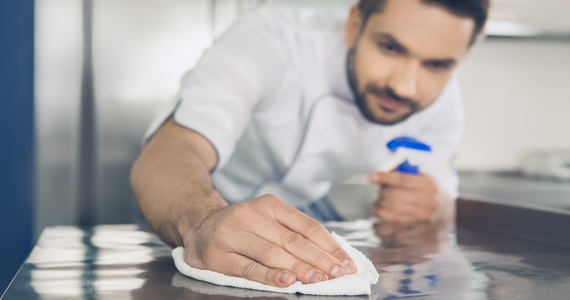
Download our restaurant cleaning checklist for front of house and back of house cleaning.
Why Safe Food Handling Is Crucial to Help Prevent COVID-19
All restaurateurs have an obligation to protect public health by following proper food safety standards in the best of times and obtaining a food service license and food handler’s permit, among other credentials. During the COVID-19 pandemic, that responsibility has become even greater.
Thankfully, there is currently no evidence of COVID-19 transmission via food or food packaging, according to the U.S. Food & Drug Administration. However, the coronavirus may be able to survive on objects or surfaces, which is one of several reasons why it’s essential to ensure that your restaurant – and your food – is safe for your guests and employees.
Your guests are the heartbeat of your business, and the good news is that they want to support you through this challenging time of social distancing and contactless dining. By communicating your food safety practices clearly and often, you’ll make it easier for your guests to feel confident ordering meals from you.
In addition to reassuring your guests that you’re going above and beyond to protect them, you must also ensure that your staff feel safe coming into work. Your team needs to know they can rely on you to prioritize their health and steward them through this crisis.
There’s no doubt that doubling down on restaurant food safety helps limit the spread of illness. But, it also makes social distancing a little less difficult for your community when they can still look forward to enjoying takeout from their favorite restaurants.
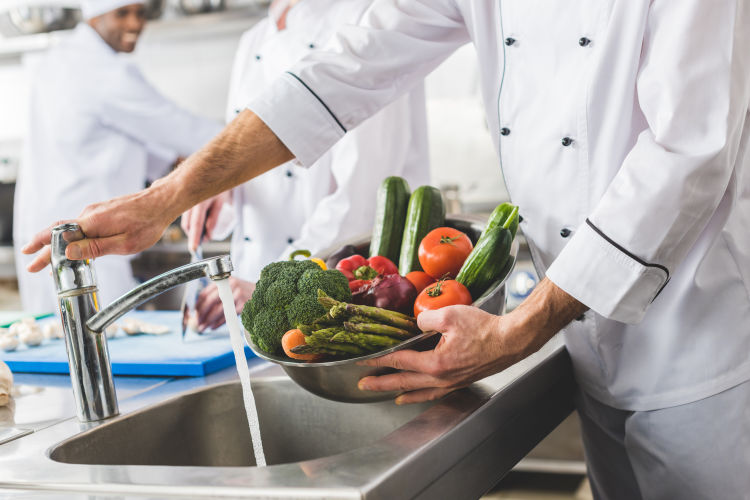
7 Restaurant Food Safety Tips You Should Implement Now
1. Send Staff Home If They Show Symptoms
Food safety starts with the people who are preparing and serving meals. You must lead by example if you want your restaurant employees to take the COVID-19 pandemic seriously. If any of your staff have cold symptoms – even mild ones, send them home. Now is not the time to ask them to jump through hoops like getting a doctor’s note.
People with flu-like symptoms who haven’t yet been tested for COVID-19 should stay home for at least 72 hours after their fever has passed, and for at least 7 days since their symptoms began, according to the Centers for Disease Control and Prevention.
You can offer sick leave pay to your staff if your restaurant is in a position to do so – you may even be required to offer paid time off, so be sure to check federal and state laws before making this decision (keep in mind, these are changing on a regular basis).
Even more than legalities, you don’t want anyone feeling like they have to rush back to work in order to pay their bills. You should also ensure that your employees know where to access information about COVID-19 testing and government financial assistance programs.
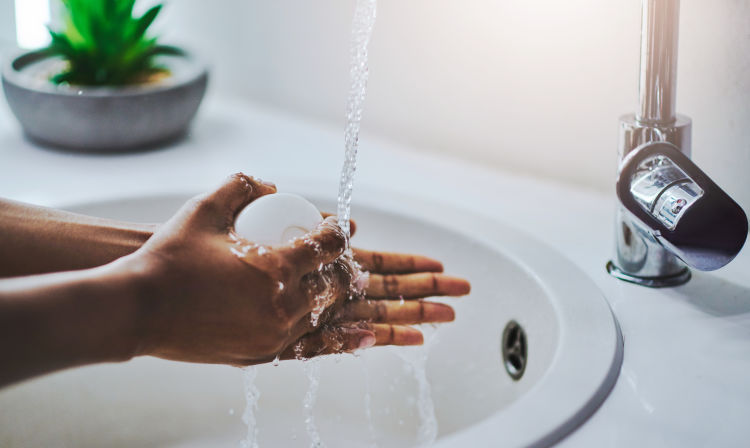
2. Make Handwashing Mandatory
Forget simply encouraging extra handwashing. Now is the time to make handwashing with soap and water for at least 20 seconds mandatory in various situations, including:
- When staff arrive at your restaurant
- Between each order they prepare
- After touching shared surfaces
- After a meal or a smoke break
- After bathroom breaks
- After handling money
- After cleaning the restaurant
- When they leave for the day
Stock your restaurant’s handwashing stations with soap and towels, and ensure that hand sanitizer with at least 60% alcohol is available in multiple spots around the front and back of house. Put posters up with handwashing information and remind staff verbally each day that you expect everyone to ramp up their handwashing efforts to help slow the spread of COVID-19.
3. Limit Food Handling
Personal hygiene is imperative when it comes to protecting against the coronavirus, but you can take measures a step further by limiting the number of people who handle food and food packaging in your restaurant. You may need to rethink the flow of your kitchen line if possible to have fewer staff involved in meal prep, as long as you continue to handle raw and cooked food separately.
Ensure that your employees who are handling food are well versed in restaurant food safety guidelines and procedures. This might be the time to revisit what was learned when your back-of-house staff got their food handlers permit, which included personal hygiene, sanitation, food safety, allergens, and food temperature.
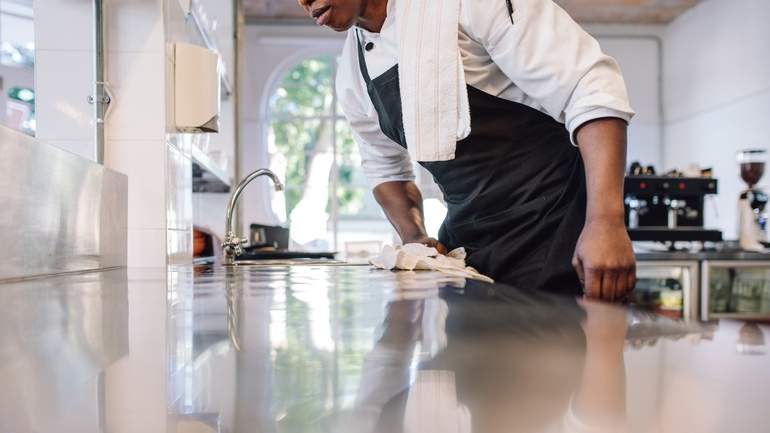
4. Clean – And Then Clean Again
Before, during, and after shifts, now is the time to up your cleaning game. Exactly how long the coronavirus can survive on surfaces hasn’t yet been confirmed, so be diligent in frequently wiping down counters and cleaning cookware, tableware, utensils, and high-contact surfaces like door handles.
The United States Environmental Protection Agency (EPA) has published a list of cleaning products that you can use as disinfectants to protect against COVID-19. To confirm whether the products in your restaurant are safe to use, simply match the EPA registration number on the product to the list (don’t go by the brand name).
Restaurateurs north of the border can refer to Health Canada’s list of hard-surface disinfectants and match the Drug Identification Number on the product label to the list.

Download our restaurant cleaning checklist for front of house and back of house cleaning.
5. Equip Drivers with Information and Protection
Restaurateurs can take several steps to protect their delivery drivers from exposure to the coronavirus, starting by outlining delivery instructions at the point when a customer places their order online or over the phone.
Many restaurants have begun doing contactless drop-offs to comply with social distancing.
Through contactless drop-off, the customer pays in advance and the driver leaves the package of food outside the door so that two parties don’t interact.
Since diners are able to place these orders online and request contactless drop-off, it provides another layer of protection between your staff or drivers and the public – many businesses who didn’t offer online ordering before are shifting their offering for this reason. You want people to place orders without coming into the restaurant, whenever possible.
You’ll want to make sure to highlight online ordering offers and new delivery practices on your website and social media channels. Make sure staff taking food orders are aware of any contactless instructions and have them communicate what’s available to customers.
If you choose not to add your own online ordering system and delivery fleet, and instead work with a third-party delivery app with a delivery app like Uber Eats, they likely have already implemented these precautions. Research what measures they’re taking so you can relay these to customers as well.
If you’re working with your own fleet, provide your delivery drivers with hand sanitizer and gloves to further protect them from COVID-19. Inform your drivers that if they do receive cash tips, they should wash or sanitize their hands immediately afterward. Drivers should also ask customers to use their own pen to sign any receipts, instead of lending them a pen. Or, opt for contactless payments made either over the phone with card-not-present transactions, through your website, or with a tap-enabled payment terminal.
6. Handle Packages Properly
You and your restaurant staff will inevitably have to touch some food packages to fulfill orders, and you’ll have to work together to do so safely. Adhere to social distancing by avoiding passing packages to one another. Instead, set the item down on a table, then walk away so the other person can pick it up safely.
As much as it may pain you from an environmental standpoint to use items wrapped in plastic, you should remove any loose takeout cutlery or napkins from your restaurant. These items all hold the potential for cross-contamination. Ask guests if they need these items – if many are eating from home, they might be fine to take their order without.
7. Be Smart with Suppliers
It’s important to protect your suppliers, as well as your guests and employees. You can use the same contactless drop-off method with suppliers that you do with delivery customers. Again, limit the number of people handling these items.
Also, ask your suppliers what precautions they’re putting in place to slow the spread of COVID-19 so that you can communicate this information to your staff and customers.
In addition to implementing these restaurant food safety tips, look into your local, state, or federal laws before finalizing or communicating your restaurant’s approach to fighting the COVID-19 pandemic. These are the best sources for up-to-date information during a situation that is changing by the day.
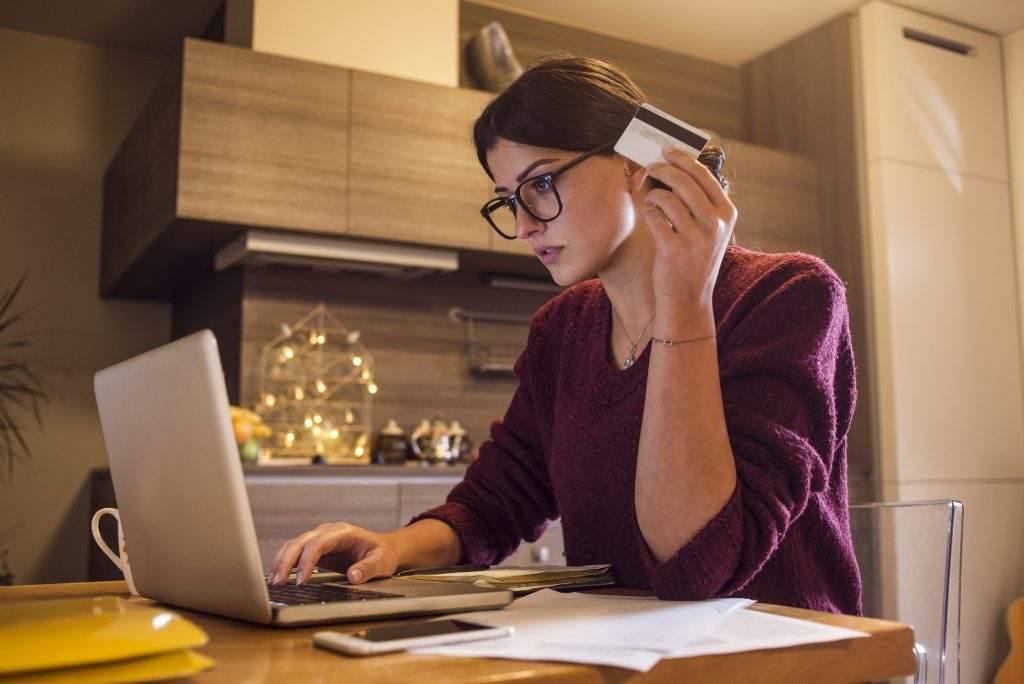
Times are tough right now, and we know you’re focused on your business, but don’t forget to take care of yourself too and try to keep your stress levels down. If you’re protecting your employees and customers by heeding food safety tips and keeping your restaurant spotless, you’re playing an important role in helping to slow the spread of COVID-19.
Remember to send any employees home who show cold symptoms, and be vigilant about handwashing and cleaning. Limit food handling and exercise proper package handling. Finally, implement contactless drop-offs with delivery drivers and suppliers if possible.
You’ve got this.

Download our restaurant cleaning checklist for front of house and back of house cleaning.
